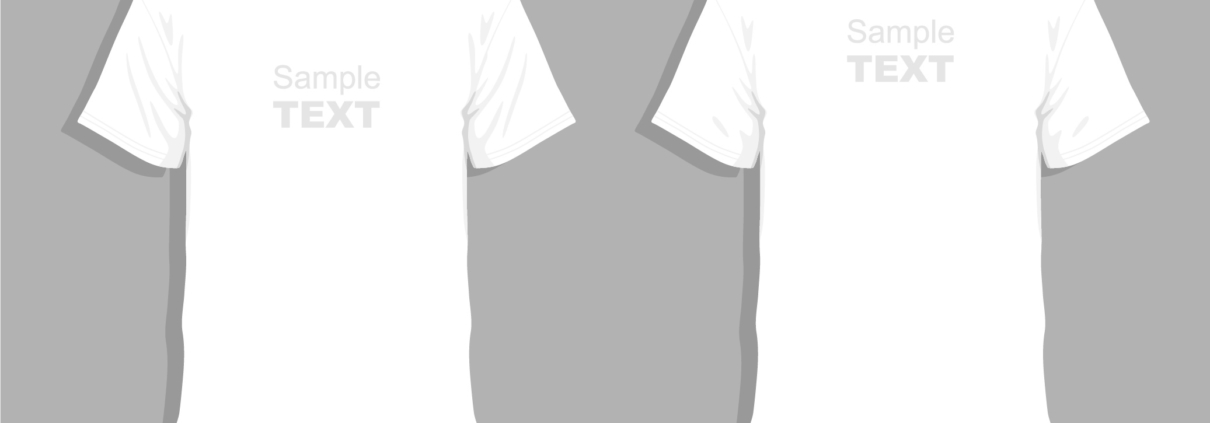
Creating a custom T-shirt design for your company, organization, or event can be a great outlet for your creativity. You get to play with colors and shapes and design placement, and this can be a great opportunity to flex your creative muscles, especially if you work in a non-creative position. However, you need to create a balanced, readable design that conveys the message you want to send in a straightforward way. A busy, detailed design can be hard to read.
Here are some aspects to consider as you design a readable custom T-shirt:
Shirt, Image, and Text Size and Placement
To create a readable T-shirt design, you need to consider the size of the image and text relative to the garments’ sizes you’re printing. A design that’s surrounded by a lot of white space on an adult large T-shirt may end up looking extremely large on a youth’s or ladies’ small shirt. You should be prepared to adjust your design’s size based on garment size so it looks consistent between shirt sizes.
When determining the design size for each garment size, you also should consider design placement, which is not the same as the design’s location on the shirt. Placement is the specific measurement of where the design should be printed within that location on the shirt. Make sure you and the printing company you’re working with center the design, including the text and the image. You should also adjust the placement measures for each garment size. This way, your design’s placement will appear consistent across the garment sizes you have printed.
Color and Contrast
When you design a custom tee, you should pay close attention to color choice. Are you using your company’s, organization’s, or school’s colors? Are the colors you’re using complementary? You’ll want to two or three colors that provide a certain level of contrast. For instance, you may use black, white, and orange, or navy blue, yellow, and lime green. Using more than three colors will make the design too busy and can increase the chance of combining clashing colors, which can look gaudy.
Once you’ve chosen your shirt and design colors, make sure you aim for a high-contrast or low-contrast design. Contrast is the degree of visual difference between the darkest and lightest parts of an image. Say you have a gray shirt. A high-contrast design would be full of bright colors that stand out sharply against the gray background. A low-contrast design would still stand out against the gray background, but the colors would be more muted and blend with the background more than a high-contrast design, though it should still be easy to read. What you want to avoid is a no-contrast design, like black lettering on a black shirt or silver lettering on a light gray shirt. No-contrast designs are hard to see and read, so if you’re going low-contrast, make sure your design doesn’t cross over into no-contrast territory.
Font Selection
You should select between one and three fonts to use. You’ll have to consider which fonts you like best, and which of those fonts work best together. You could combine serif and sans serif fonts as well as typeface subcategories and font moods. The fonts and font sizes you choose should be easy to read and they should lend a straightforward look to your shirt design. Also make sure your text has the appropriate amount of spacing, so it doesn’t bunch up or spread out to much.
Composition and Complexity
With T-shirt designs, less is more, and that’s especially true for their composition and complexity. Composition is how all of the elements of a design come together. As with font selection, this is a good design step for examining how your text will appear on your shirts. Make sure your text is balanced around the image you’re using and that it reads in the right order. Putting the text to one side of the image will make the design look unbalanced and lopsided, but breaking the text up around the image in the wrong way can make it difficult to read.
Complexity has to do with the number of details your design has. You should use the minimum amount of details to convey your message through design. Too many details will clutter the image and make it difficult to understand.
Keep your design simple and straightforward so people who see your shirts will understand the meaning of their design.
Design Readable Custom T-Shirts With Marathon Sportswear
At Marathon Sportswear, we use our experience and screenprinting technologies to help you design readable custom T-shirts for your company, organization, or event. If you are interested in our custom T-shirt services, contact us today.


